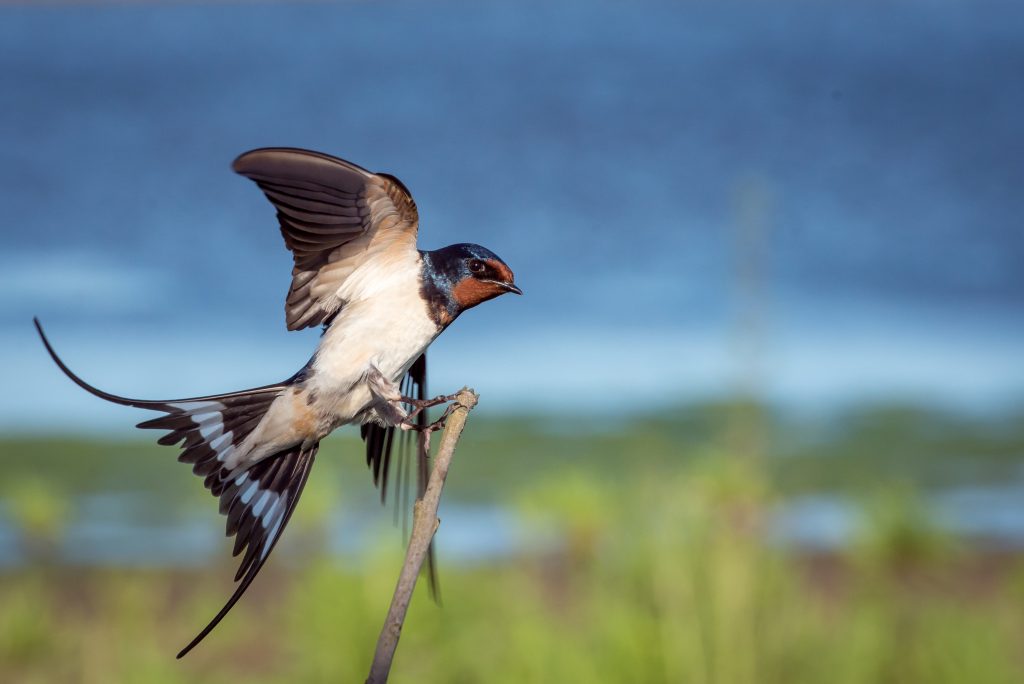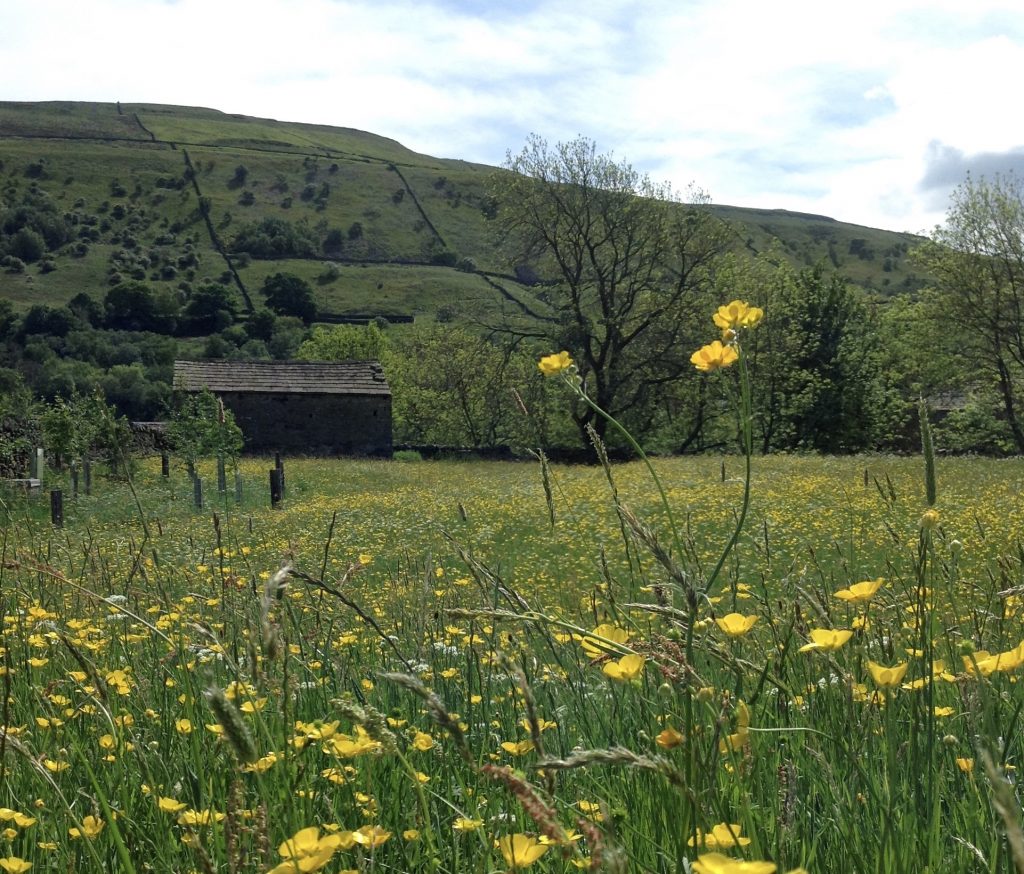
Conversations in Swaledale anecdotally suggest that there has been a decline in the numbers of swifts, swallows and martins (house martins and sand martins) in recent years. If true, this follows a national trend.
The BTO (British Trust for Ornithology) states that there has been a national decline in swifts since 1994, and they are now at amber status on the list for conservation. According to the RSPB, house martins have also had a 47 per cent reduction in numbers between 1970-2014, and are currently on amber status. Swallow populations appear to fluctuate but overall have seen a reduction in numbers, though as yet, have managed to maintain a large enough population to stay out of amber status.
Why has there been a decline?
There are a number of reasons for these population declines.
- Loss of nesting sites. As houses and barns are renovated, old nest sites are lost and potential for new sites is reduced.
- Loss of food supply. All four of these species feed on airborne insects that hatch and fly over uncut meadows, grazed meadows, woodlands and bodies of water. As these habitats decline, available forage also declines.
- The weather! To build nests, these species need mud, therefore when there is less than average rainfall or dry conditions in spring when they are building nests this compromises their ability to breed.
- Climatic conditions affect winter grounds and migration routes. Research shows that if birds arrive in Britain in poor condition in spring their ability to breed is compromised.
For more in-depth Information on why these birds are in decline go to https://www.swift-conservation.org and https://www.rspb.org.uk and search for ‘swift, swallow and martin population trends’.
The swifts, swallows and martins of Swaledale project

Sustainable Swaledale have set out a 5-year project to help this amazing group of birds, in the hope that for years to come there will be screaming swifts above our homes and meadows, chattering swallows gathering on roofs and lines for winter migration, and martins swooping in and out of eves and walls to feed their young.
We aim to
- Create a database of information about how these species use Swaledale and Arkengarthdale, to help monitor numbers and the effect of the project.
- Raise awareness amongst locals and visitors as to the plight of these birds and how they can help us to help them.
- Provide 25 nest boxes per year for appropriate sites and install them in conjunction with local contractors.
- Monitor numbers, nest sites and returning birds over the five years to measure the impact of the project.
What you can do right now (and over the summer) to help

1. Tell us what you see
We want information about current populations, and you can help by recording what you see.
When you are out in the garden or taking a walk, cycle or run, take note of what you see and record your sighting on our simple data survey form.
You can remind yourself how to identify each of the species on the RSPB website. You will need to let us know how many birds you saw and what they are doing, flying high, flying low, nesting building or feeding young. We will also need to know your location by using the what3 words app which is simple and free to use. https://what3words.com/products/what3words-app/
2. If you have the space in your garden you can create a mud patch which you keep watered to provide nest builders with materials.
3. You could put up your own swift swallow or martin nest box, but make sure you follow guidelines as to where to locate them to improve the chance of success.
4. If you have a barn or out building you can could leave the door or half door open for the summer, so that birds can fly in and make a nest site.
5. If you have the space on your land or garden you can leave areas to grow and flower providing areas for insects to feed and hatch from. Why not get involved with our one-acre wild flower project?
6. If you maintain meadows you can decide not to cut or graze the whole meadow, but leave a 3m margin around the field extremities that does not get cut or grazed until the last cut of the year.
7. Think again before you decide to fell mature trees, species such as sycamore are huge manufactures of greenfly and provide lots of forage for our feathered friends.
8. Get involved with our ‘together for trees’ project to creat areas of new woodland and therefore food sources.
9. If you specifically see swifts, you can enter you siting on the RSPB ‘swift mapper’ web page, there are currently only a handful of entries for Swaledale and Arkengarthdale. https://www.rspb.org.uk/our-work/conservation/conservation-and-sustainability/safeguarding-species/swiftmapper/
10. Purchase a swifts, swallows and martins of Swaledale project reusable bag or card collection to help fund the project. (Coming soon)
In the future
We will be continually updating the information we provide, writing articles in the Reeth Gazette to keep you informed and organising some nest box building days. We are also producing a card collection and reusable bags to help fund the project – they will be available in Reeth over the summer.